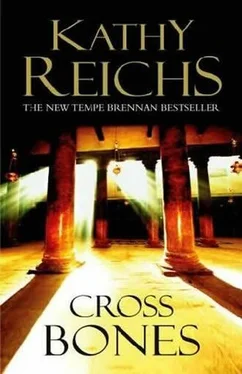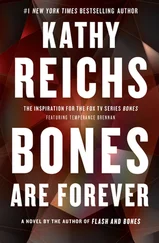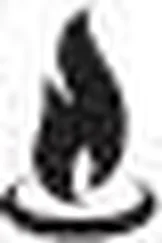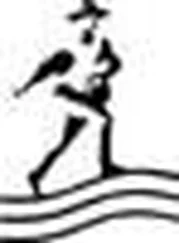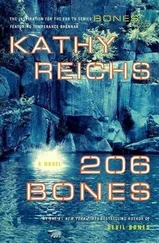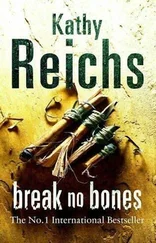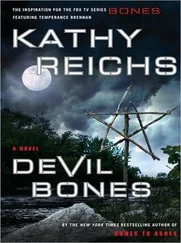Morissonneau hurried from the room.
Five minutes passed.
A clock bonged somewhere down the hall. Otherwise, the building was silent.
Ten minutes passed.
Bored, I rose and crossed to examine the painting. I’d been right but wrong. The canvas and crucifix did constitute a before-and-after sequence, but I’d reversed the order.
The painting depicted Easter morning. Four figures were framed by a tomb. Two angels sat on an open stone coffin, and a woman, probably Mary Magdalene, stood between them. A risen Jesus was to the right.
As in the library, I didn’t hear Morissonneau’s entry. The first thing I knew he was circling me, a two-by-three-foot crate in his hands. He stopped when he saw me, and his face softened.
“Lovely, isn’t it? So much more delicate than most renderings of the resurrection.” Morissonneau’s voice was altogether different than it had been earlier. He sounded like Gramps showing photos of the grandkids.
“Yes, it is.” The painting had an ethereal quality that really was beautiful.
“Edward Burne-Jones. Do you know him?” Morissonneau asked.
I shook my head.
“He was a Victorian English artist, a student of Rossetti. Many Burne-Jones paintings have an almost dreamlike quality to them. This one is titledThe Morning of the Resurrection. It was done in 1882.”
Morissonneau’s gaze lingered a moment on the painting, then his jaw tightened and his lips went thin. Circling the desk, he set the crate on the blotter and resumed his seat.
Morissonneau paused a moment, collecting his thoughts. When he spoke his tone was again tense.
“The monastic life is one of solitude, prayer, and study. I chose that.” Morissonneau spoke slowly, putting pauses where pauses wouldn’t normally go. “With my vows, I turned my back on involvement in the politics and concerns of this world.”
Morissonneau placed a liver-spotted hand on the crate.
“But I could not ignore world events. And I could not turn my back on friendship.”
Morissonneau stared at his hand, engaged, still, in some inner struggle. Truth or dare.
Truth.
“These bones are from the Musée de l’Homme.”
A match flared in my chest.
“The skeleton stolen by Yossi Lerner.”
“Yes.”
“How long have you had it?”
“Too long.”
“You agreed to keep it for Avram Ferris?”
Tight nod.
“Why?”
“So many ‘whys.’ Why did Avram insist that I take it? Why did I consent? Why have I persisted in this shared dishonesty?”
“Start with Ferris.”
“Avram accepted the skeleton from Yossi because of loyalty, and because Yossi convinced him that its rediscovery would trigger cataclysmic events. After transporting the bones to Canada, Avram hid them at his warehouse for several years. Eventually, he grew uncomfortable. More than uncomfortable. Obsessed.”
“Why?”
“Avram is a Jew. These are the remains of a human being.” Morissonneau caressed the box. “And…”
Morissonneau’s head cocked up. Light reflected from one lens.
“Who’s there?”
I heard the soft swish of fabric.
“Frère Marc?” Morissonneau’s voice was sharp.
I swiveled. A form filled the open doorway. Placing fingers to lips, the scar-faced monk raised his one good brow.
Morissonneau shook his head.“Laissez-nous.” Leave us.
The monk bowed and withdrew.
Lurching to his feet, Morissonneau strode across the office and closed the door.
“Avram grew uncomfortable,” I prompted when he’d resumed his seat.
“He believed what Yossi believed.” Hushed.
“That the skeleton is that of Jesus Christ?”
Morissonneau’s eyes flicked to the painting, then down again. He nodded.
“Did you believe that?”
“Believe it? No, I didn’t believe it, but I didn’t know. Don’t know. I couldn’t take a chance. What if Yossi and Avram were right? Jesus not dead on the cross? It would be the death knell for Christianity.”
“It would undercut the most fundamental tenets of the faith.”
“Just so. The Christian faith is based on the premise of our savior’s death and resurrection. Belief in the Passion is pivotal to a creed around which one billion souls fashion their lives. One billion souls, Dr. Brennan. The consequences of the undermining of that belief would be unthinkable.”
Morissonneau closed his eyes, imagining, I could only guess, unthinkable consequences. When he opened them, his voice was stronger.
“Avram and Yossi were probably wrong. I don’t believe these are the bones of Jesus Christ. But what if the press picked up on the story? What if the cesspool that is today’s mass media engaged in one of their nauseating spectacles, selling their souls for a larger share of the audience for the six o’clock news? The ensuing controversy alone would be a catastrophe.”
He didn’t wait for a reply.
“I’ll tell you what would happen. A billion lives would be wrenched out of joint. Faith would be subverted. Spiritual devastation would be rampant. The Christian world would be cast into crisis. But it wouldn’t end there, Dr. Brennan. Like it or not, Christianity is a powerful political and economic force. Collapse of the Christian church would lead to global upheaval. Instability. World chaos.”
Morissonneau punched the air with one finger.
“Western civilization would be torn loose at the roots. I believed that then. I believe that even more fervently now, with Islamic extremists pushing their new brand of religious fanaticism.”
He leaned forward.
“I am Catholic, but I have studied the Muslim faith. And I have watched closely developments in the Middle East. Even back then, I saw the unrest and knew a crisis was looming. Do you remember the Munich Olympic games?”
“Palestinian terrorists kidnapped part of the Israeli team. All eleven athletes were killed.”
“The kidnappers were members of a PLO faction called Black September. Three were captured. A little over a month later, a Lufthansa jet was hijacked by more terrorists demanding the release of the Munich killers. The Germans complied. That was 1972, Dr. Brennan. I watched the news coverage, knowing it was just the beginning. Those events took place one year before Yossi stole the skeleton and gave it to Avram.
“I am a tolerant man. I have nothing but the highest regard for my Islamic brethren. Muslims generally are hardworking, family-centered, peace-loving people who adhere to the same values you and I hold dear. But, among the good, there exists a sinister minority driven by hate and committed to destruction.”
“The jihadists.”
“Are you familiar with Wahhabism, Dr. Brennan?”
I wasn’t.
“Wahhabism is an austere form of Islam that blossomed on the Arabian Peninsula. For over two centuries it’s been Saudi Arabia ’s dominant faith.”
“What distinguishes Wahhabism from mainstream Islam?”
“Insistence on a literal interpretation of the Koran.”
“Sounds like good old Christian fundamentalism.”
“In many ways it is. But Wahhabism goes much further, calling for the complete rejection and destruction of anything and everything not based on the original teachings of Muhammad. The sect’s explosive growth began in the seventies when Saudi charities started funding Wahhabi mosques and schools, called madrassas, everywhere from Islamabad to Culver City.”
“Is the movement really that bad?”
“Was Afghanistan that bad under the Taliban? Or Iran under the Ayatollah Khomeini?”
Morissonneau didn’t pause for an answer.
“Wahhabis aren’t simply interested in minds and souls. The sect has an ambitious political agenda focused on the replacement of secular leadership with a fundamentalist religious governing group or person in every Muslim country on the planet.”
Читать дальше
